I think Half-Life is one of the greatest video games of all time, which isn’t a controversial opinion. Valve’s 1998 debut rocked the gaming world. Many aspects of its design have yet to be topped. Nowhere is this more obvious than Half-Life’s sixth level, Blast Pit.
I’ve been thinking about Blast Pit in connection with another game I’ve been playing a lot lately, Bungie’s Destiny. As wonderful a game as Destiny is, I’ve found myself getting tired of the game’s bosses. They sit there doing next to nothing while players slowly shoot and chip away at their health until their defeat. One boss took our team about twenty minutes to defeat, driving one of us to remark “I hate bullet sponges.” We all agreed.
Fighting that boss was mind-numbing and boring, devoid of fun or purpose. It wasn’t just a Destiny problem. Bad, spongy bosses have plagued first-person shooters for a while. Fortunately, Valve solved those problems with Blast Pit.
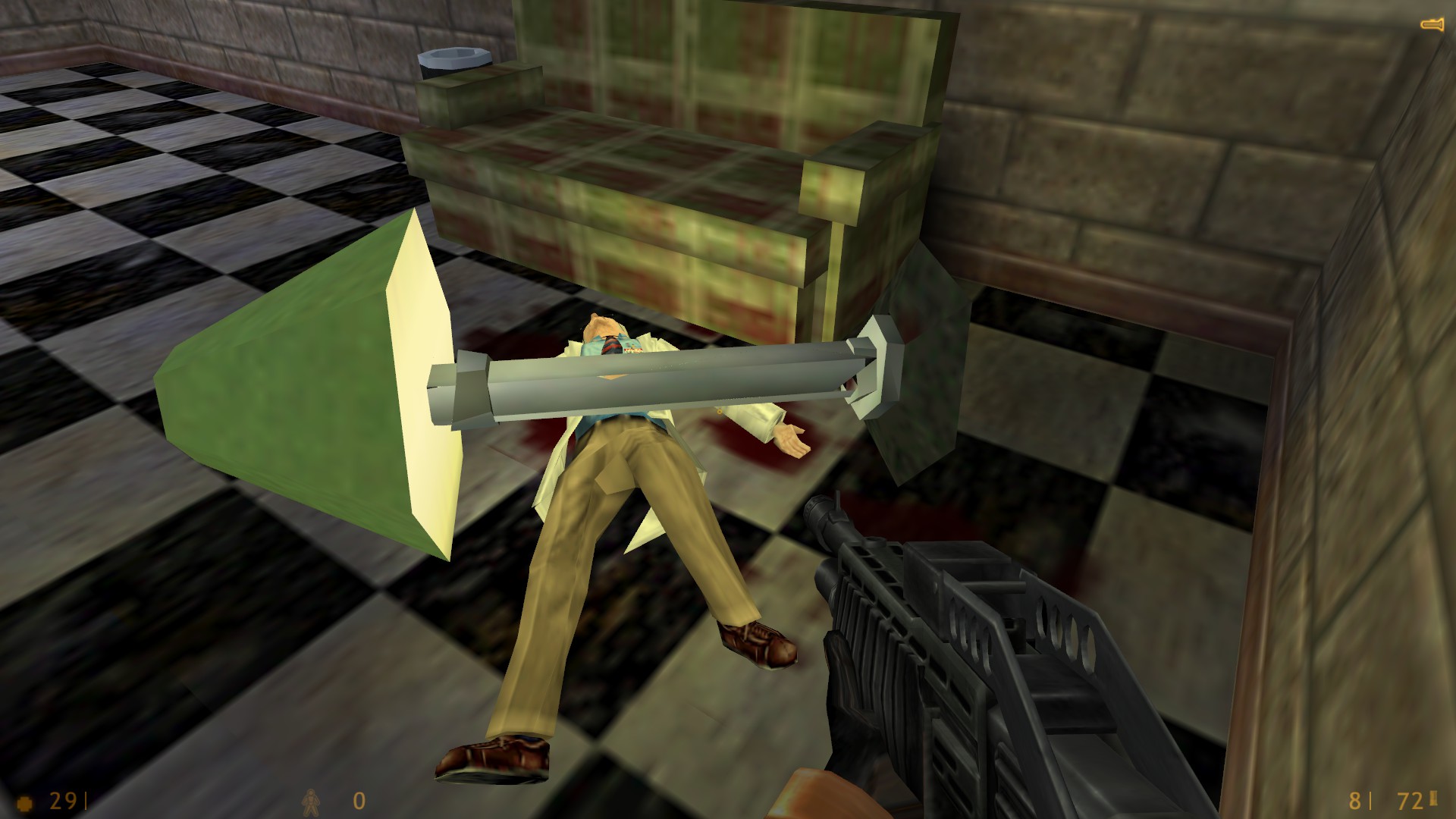
For this article, I re-played everything from the first level of Half-Life to the end of Blast Pit. It’s interesting to compare Half-Life to modern video games. The game’s wonky manoeuvrability and dated animations hold it back a little. The odd, unrealistic level spaces would be laughed at today. But the level design is wonderful, especially with all the tricks Valve plays with how and where enemies spawn.
Blast Pit is, I think, the best level in Half-Life. Where most of the game’s levels are about moving from point A to B, Blast Pit is about encountering a large boss, then using an entire level against him. Rather than simply sticking you in a fight with a big boss and having you unload your arsenal on him in a lengthy, boring test of endurance, Half-Life sends you through a series of rooms and encounters, changing things up until the boss is finally defeated.
One moment you’re trying not to set off a room full of explosives while killing a zombie. The next, you’re riding an elevator to a tram that will launch you into a pool full of toxic goo.
The boss is just a tentacle. It only shows up for a few minutes in your playthrough. It’s scary anyway. It is your nemesis. You’re made to encounter it four times throughout the level, ensuring that it remains the focal point even though you’re never with it too long. It never gets boring, which can’t be said for most bosses in games today.
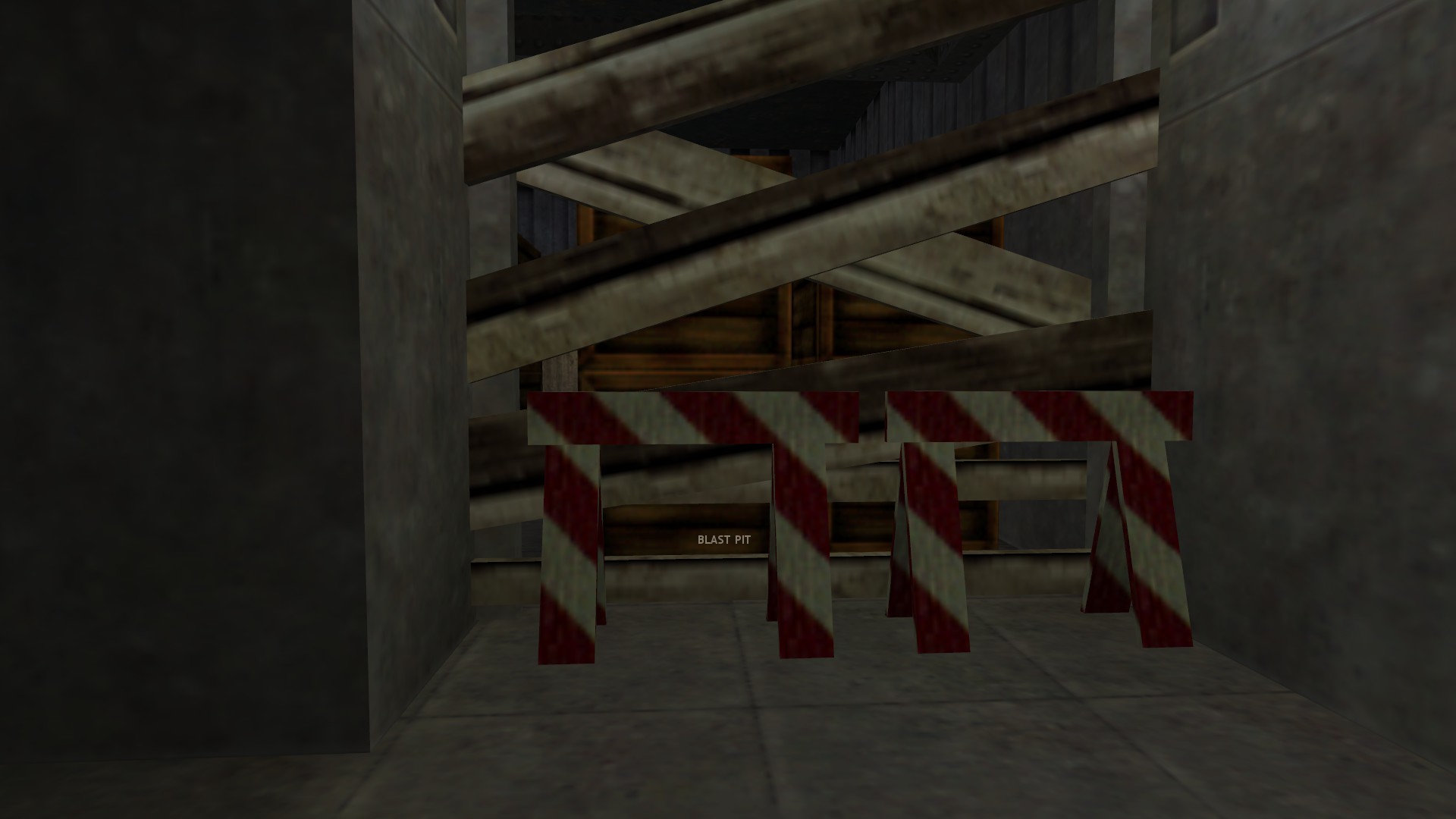
A quiet start…
Blast Pit is Half-Life‘s sixth level. The one before it is called “We’ve Got Hostiles!” In that one, Gordon Freeman — that’s you — has been trying to get out of the Black Mesa secret research facility. Unfortunately, he discovers that a Marine “rescue mission” is actually a cleanup mission. The level begins with you encountering a giant, impassable red door. Your goal is to “get to the surface,” but that is eventually scuttled when the Marines start shooting. So you head back down into the base and return to the red door.This time, you can open it.
As you walk through the red door and into Silo D, Blast Pit begins.
Well, actually, not quite. You walk through, and there’s a bunch of crates. You have to smash them. It’s boring. You’ve just spent an entire level being betrayed, and… the first thing you find behind this giant door is a bunch of crates to smash. It’s an inauspicious start to one of the greatest levels in video game history, but that’s about to change.
Get through the crates and you’re ambushed by some headcrabs that have been waiting for you to come along. They drop from the ceiling. Alone, they’re not that bad, but the bullsquid off in the distance isn’t helping things. A bullsquid is a monster with a ranged spit attack and a close-range melee. The spit itself is slow enough to dodge, but when dealing with headcrabs, it’s a tense, fun situation. Bullsquids make that happen, and it was a bummer we never got to see them in Half-Life 2.
The room you enter is fairly large in comparison to the earlier levels in the game, and it sets the tone for Blast Pit. Barring the opening level, much of Half-Life’s spaces have been small up to this point. Even the brief outdoor fight from “We’ve Got Hostiles!” is in a small, gated enclosure. The bullsquid room is large. It’s got a huge cargo elevator in it — to activate it, you’ll have to climb up to a control room and pull a lever, which causes a lights to turn on and sirens to blare. It’s big.
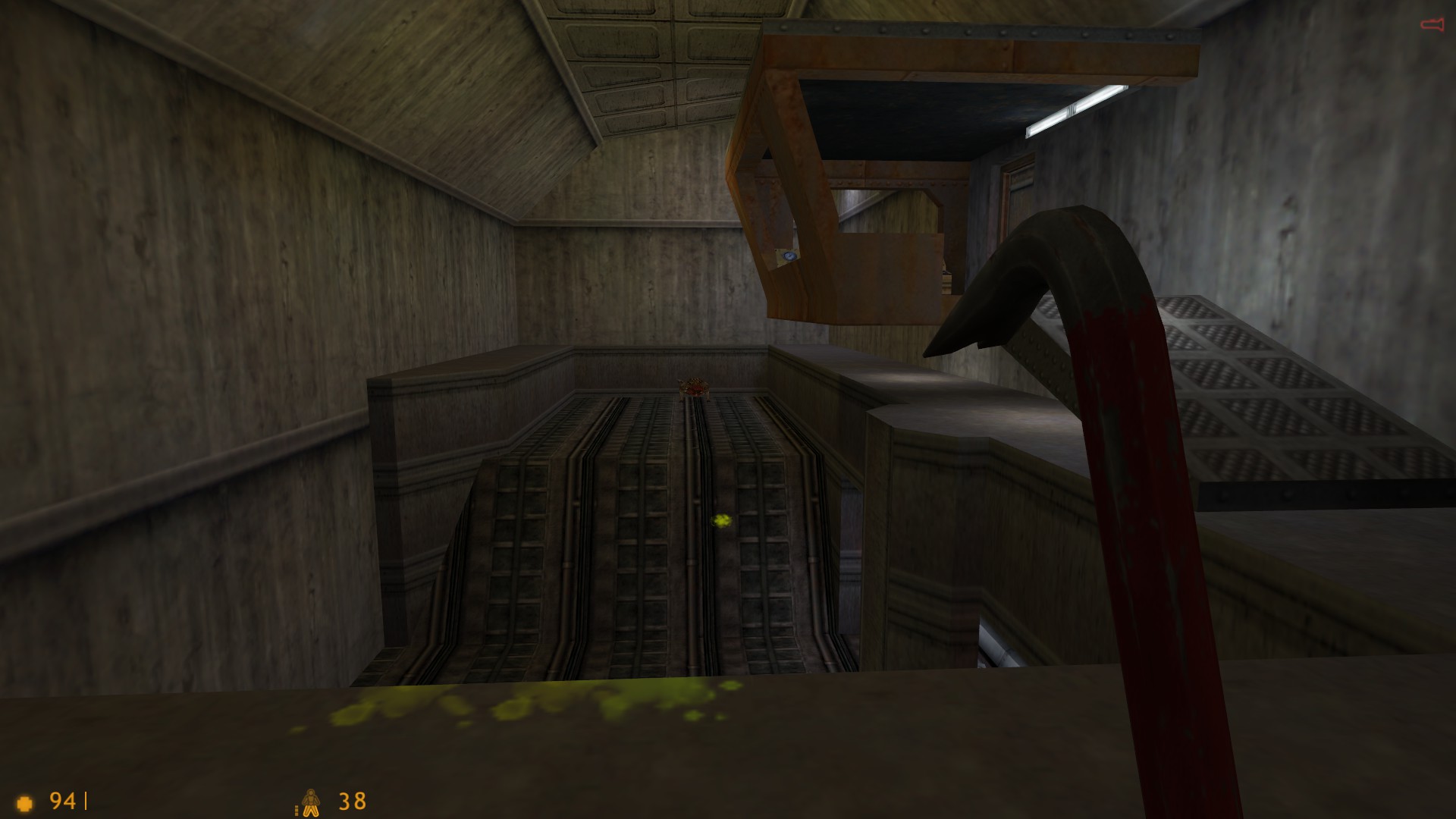
While you’re in the control room, a zombie comes through another door on your right. If, like me, you whirl around to shoot it, there’s a chance you’ll blow yourself up. There’s an explosive barrel behind the zombie, and in the room next to him is a crate of dynamite. Try to shoot him and, kaboom, everyone dies, including you!
This exploding room is one of the things that makes Half-Life special. It’s a game about surprises and clever enemy spawns. You’ve got to play it smart, shooting the zombie without a single stray bullet setting off the explosives or backpedaling so the zombie exits the room before you blast it. Another example of this kind of good Half-Life surprise: In “We’ve Got Hostiles,” Valve introduced tripwires. One tripwire was set across a slippery puzzle. You had got to jump over it, but when you landed, you slid and Valve cleverly stuck an open elevator shaft on the other side. It’s tricky and fun, one of many similar situations in the game.
These surprising moments stand out, especially compared to what you see in top modern shooters. More recent shooters have focused on creating shooting galleries, slowing players down through health systems (regenerating health encourages players to remain stationary) and the use of enemies that often hide in cover. Here, Valve keeps players on their toes by establishing a living environment. Enemies bait players into shooting the wrong thing and inadvertently killing themselves.
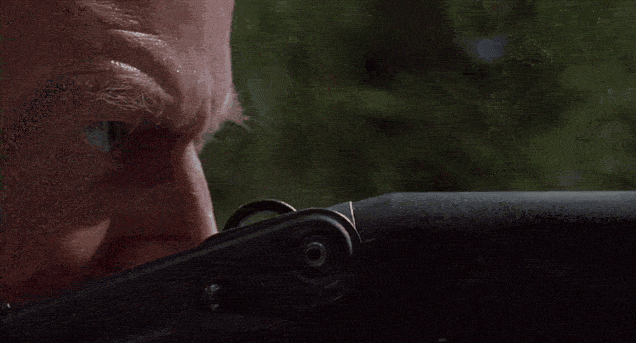
Enemies in just the right spots…
You know that scene in Jurassic Park where Muldoon’s trying to find the velociraptor, and it outflanks him, and he quotes Total Recall and says “clever girl” just before it kills him? That’s Half-Life’s spawns. It’s a game that encourages you to think about the space you’re in. It’s not just about where your enemies are in relation to you, but where a bunch of different things are, all in relation to each other. It’s a game that frequently brings a smile to my face whenever I run into a particularly devious scenario, and I think it really brings Valve’s later games down quite a bit.
Back to Blast Pit. You’ve just defeated that zombie. You can enter the room it came from and find a reward — health and a grenade.
Head back out, jump onto the elevator, ride it down, and you’ll find a tram surrounded by houndeyes. Like bullsquids, houndeyes are interesting enemies that round out Half-Life’s bestiary, yet Valve unceremoniously dropped them from Half-Life 2. Where bullsquids are ranged enemies, houndeyes are three legged, many-eyed dog creatures. They’re kind of like Flood carrier forms in Halo: they try to walk up to you and explode, but unlike the carriers, they can take more damage and they don’t die when they attack you. This is balanced by them charging up their attack. The charge is signaled by a characteristic whine as they ready their attack. Really cool enemy design right there.
Get past the houndeyes, hop on the tram, and go! You’ll zoom through a huge tunnel, watching houndeyes, bullsquids, and headcrabs fight each other. All seems to be going well until you round a bend and crash into a barrier, which flings you into a crate. The crate collapses, dropping you into toxic goo!
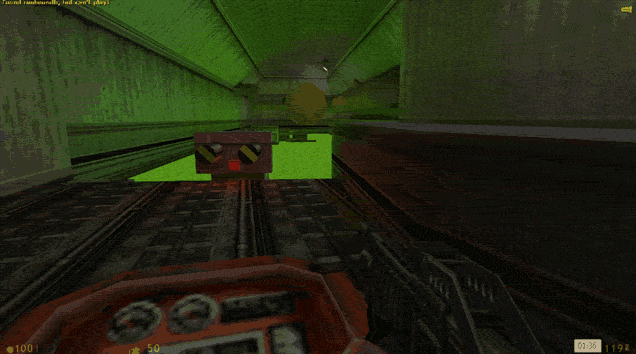
It’s a wonderful “clever girl” moment.
Leap out, fight another bullsquid, climb into some pipes, fight through another pipe room, and… woah.
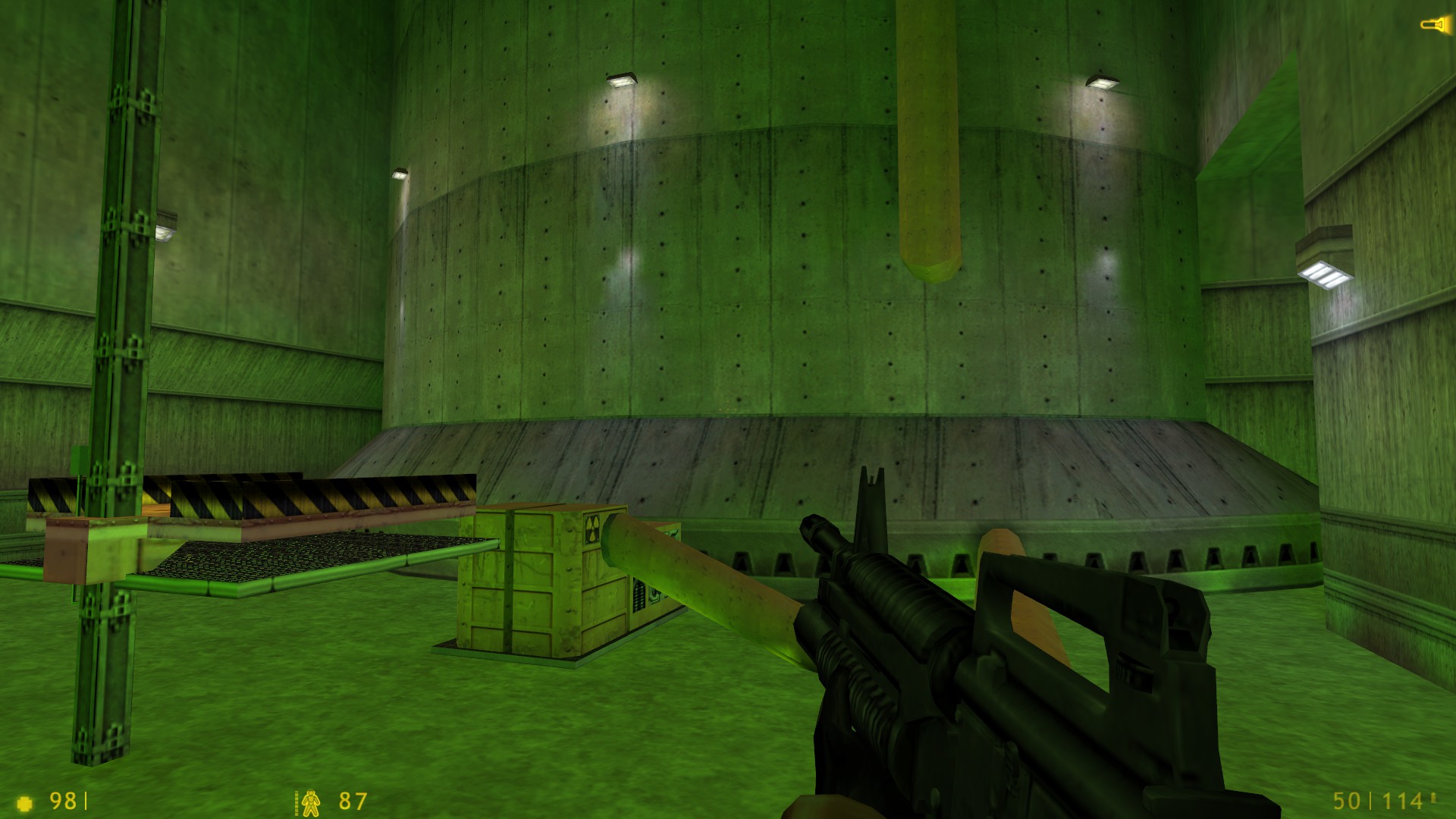
Valve really wanted to show off scale in this map. It’s a simple room. You follow a path, get to the elevator, and ride it up. The room feels huge, in part because of the gigantic silo that occupies the far side. It’s on a different scale from everything else in the game up to this point.
At the top of the elevator is a hall that leads you inside the silo. Another bullsquid is munching on a scientist in the corner. Kill it and someof houndeyes come running. Kill them, walk on the railing around the inside edge of the silo, and make your way to the inside of the silo. Unfortunately, another houndeye stands in your way.
On the catwalk next to this houndeye are two explosive barrels. If he attacks, they will blow up and take the bridge with it, which, fortunately, doesn’t spell instant failure. It just adds a complication for you: now you’ll have to jump across the gap. Valve also dropped off some health kits behind you. They’re sitting next to some totally-not-suspicious-at-all explosive barrels, behind which is hidden, yup, another houndeye.
Kill both houndeyes without setting them off and you’re golden. Fail to stop them, and the resulting explosion adds a new obstacle.
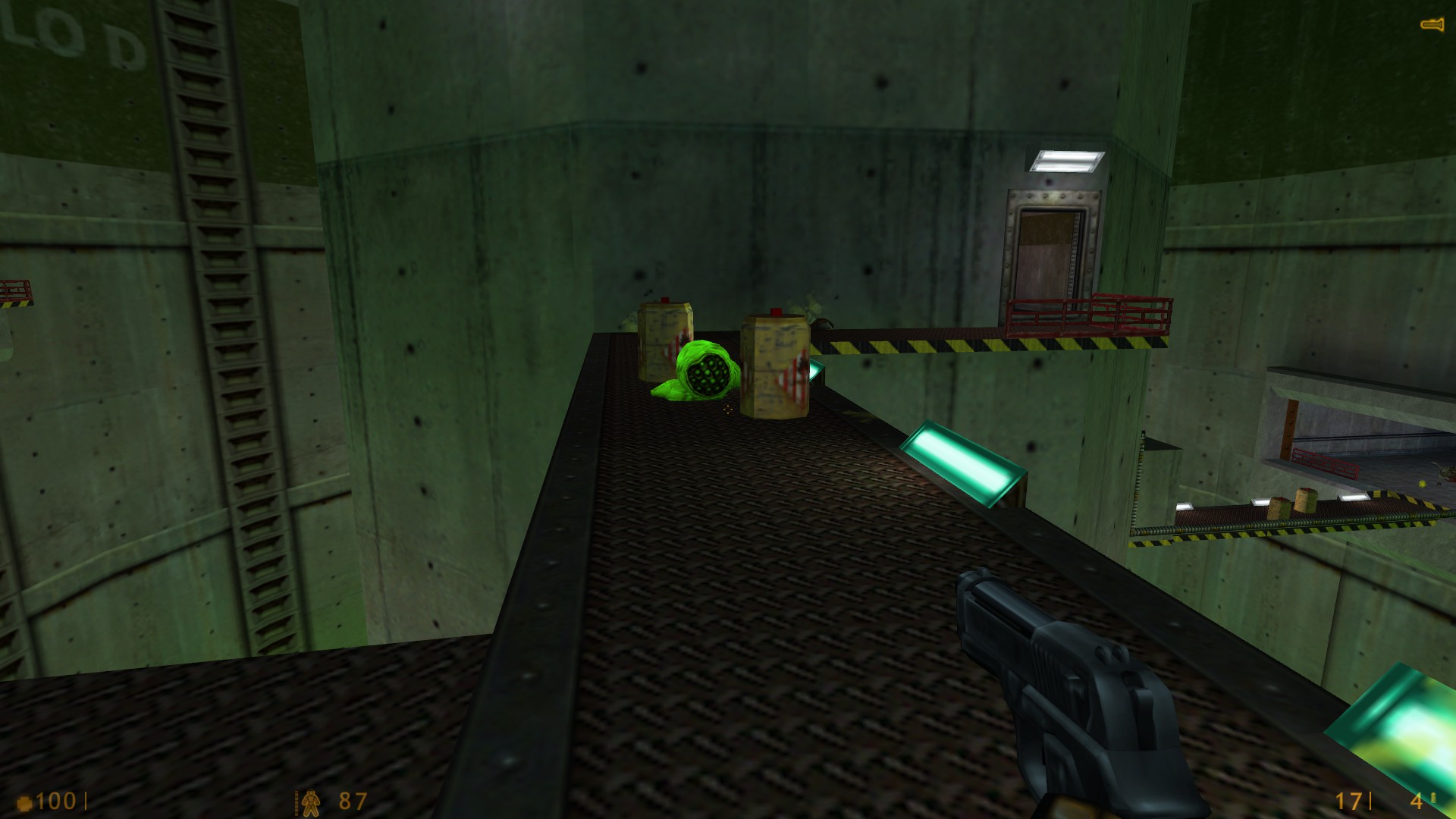
Difficulty in many games is simply about increasing the length of time it takes to kill your foes and decreasing the length of time it takes to kill you. With Half-Life, Valve implements challenge through awareness. The challenge isn’t from having the constitution of soggy cardboard, it’s from intelligently managing the enemy spawns. Messing up might not kill you right away, but it can have repercussions down the line if you’re not careful.
Assuming you get past the houndeyes without a scratch — and you’ve survived the Bullsquid that’s pelting you from far away — you’ll find yourself at the inner silo. Head inside, kill a zombie that’s waiting on the other side of the door, walk down a narrow corridor. You’ll find a mortally-wounded scientist, who tries to tell you something before he dies, something about killing “it” before it grows any larger. All the while, you’ll hear a loud clanging noise. Something big is just around the corner.
Uh oh.
Exit that corridor and you’ll find another scientist. This one seems totally fine, until a giant monster reaches through into the window and grabs him.
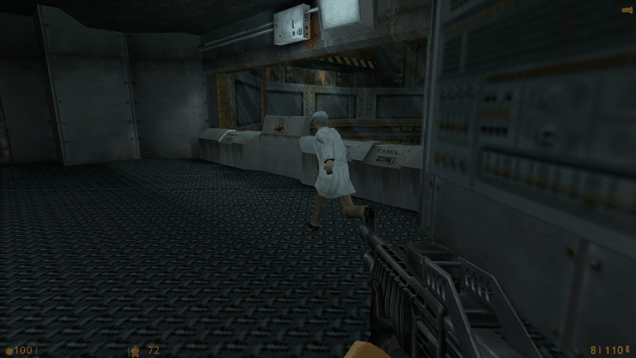
Meet the boss.
It’s one of the most exciting moments in the game and a great example of a scripted sequence done right. Many modern games utilise scripted sequences to show you something cool, often taking control away from you, the player. Here, Valve uses a scripted sequence to show you just how terrifying the Tentacle is. It’s directly related to the gameplay.
In the room is a button that fires a rocket motor that’s suspended above the tentacles. Problem is, the engine’s got no fuel or power, so you can’t kill it. Not yet.
Moving on, you’ll find a guard who tells you that the monster is attracted to sound. To bring the point home, Valve has another guard shoot the creature with his pistol, screaming at it, calling it an “outer space octopus.” Frankly, I think this name is better than “tentacle,” but, hey, that’s what Valve calls it.
You’ll also find a box of grenades. Obviously, the game wants you to attack the boss with grenades! So, you chuck a grenade or two at the boss. If you miss, the tentacles will start attacking the area of the explosion for a few seconds. If you manage to score a hit, the tentacles will retreat into their hole for a few seconds. Then they will pop out again.
You can’t kill the tentacle, but you can sneak past it. Unfortunately, you’ll have to smash some crates and smash through a boarded up doorway, which will attract the monster’s attention. You’d better use grenades to distract it. Assuming you get through, you’ll take a hallway to a catwalk that takes you outside. You cross across another catwalk through the gigantic outer silo and head down the hall to a fuel room.
Valve’s got another great spawn here — in the shadows at the bottom of the ladder, two zombies wait. As long as you’ve got a grenade, they’re easy to pass. In another display of epic scale, you’ve got a massive ladder to climb, down through the biggest elevator shaft you’ve yet seen in the game.
Climb down, walk on some pipes and try not to slip off. Hang a left — the right’s a dead end — climb up a ladder, shoot a grate, and you’ll find a zombie waiting for you. Kill it, pick up some grenades, open a door, shoot some zombies… and… woah.
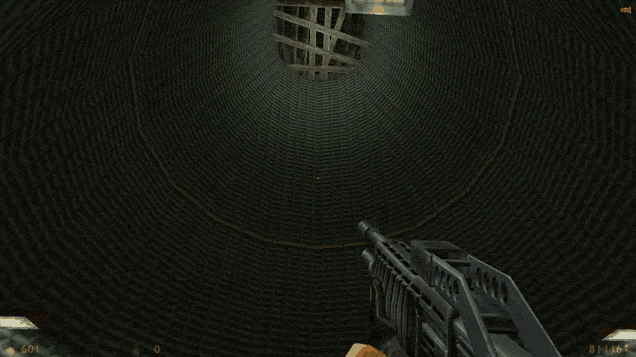
Imaginative architecture.
That is a giant fan. It is in a room dedicated solely to the giant fan.
As Ross Scott points out frequently in Freeman’s Mind, much of Half-Life‘s architecture makes little sense. Play a game like Half-Life 2 and a lot of the places you’re in seem believable, even relatable. Creating a believable, lived-in space is one of Half-Life 2’s greatest strengths, but as a result, it feels smaller. Half-Life, however, isn’t so much a replication of a secret science base as it is a representation of one. It’s like an impressionistic approach — a bunch of weird, awe-inspiring, interconnected rooms.
Why is there a room with fanblades the size of a bus? I have no idea, but it doesn’t matter. A ladder takes you below the fan, where you flip on the switch, only to discover that the only way up is… past the now-spinning fan blade. It makes no sense at all — who would design a giant fan like this?
Who cares whether it makes sense? The level design puts you in a fun situation where you have to flip a switch, turn around, and climb up a ladder before a giant fan blade kills you. It’s another devious moment on the part of Valve, another one of those “pay attention to your surroundings” things.
Oh, and the giant fan works a lot like one of those indoor skydiving facilities. Jump into it and you’ll start flying! It launches you up to the roof where you have to crowbar some boards, squeeze through, and get into some air ducts. Awesome.
Climb through the air ducts, kill some head crabs, and you’ll find a room with a few zombies and a headcrab. This is the biggest fight in the entire level, and you might notice that it’s fairly small, especially in comparison to the mad gunfights of “We’ve Got Hostiles!” That’s because being a shooter is a secondary priority in Blast Pit. It’s not about combat; it’s about problem solving.
Combat is just one of many ways to solve problems in the game, and quite often, like the exploding room at the start of the level, using a gun can actually get you killed.
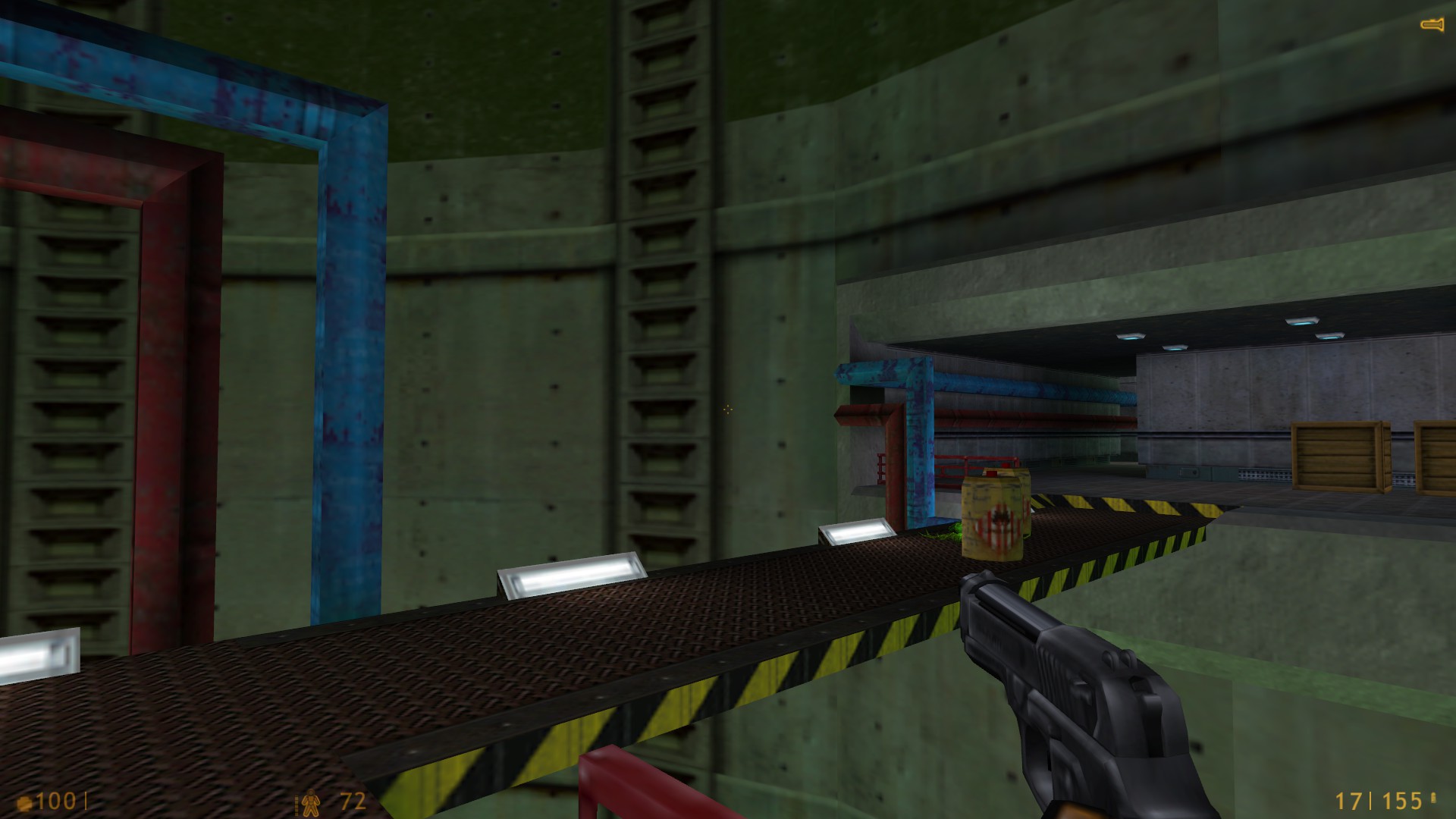
Something new?
Every few minutes, Valve changes what you’re doing, keeping the game interesting, rather than just making the level a series of fight corridors. Once you’ve completed this firefight, it’s back to the room with the tentacle, climb down some more, and fight through another doorway without getting killed. Problem is, the next hallway that you’re in is missing its floor, which means you’ll have to jump. In the next section of the hall, you’ll want to keep walking, because the floor starts to collapse under your weight.
Kill a zombie, walk across a catwalk, run down a hall, go past a Completely Harmless Puddle That Isn’t In Any Way Dangerous At This Present Time, fight some houndeyes, enter a room, shoot some barnacles and a bullsquid, call the elevator, and watch as the lights flip on. This elevator shaft is huge, hammering home the scale of the level.
The elevator descends, as elevators do, until it decides not to be an elevator and gets stuck, making scary creaking noises. Leap across a gap and grab onto the ladder built into a wall. Fail, and you fall to your death. Succeed, and you’ll survive while the elevator falls to its death. Climb down, and a scientist will seem unimpressed that you just defied death to get to him. Try to get him to follow, and he won’t. He will compliment your hazard suit, though.
Pass through some radiation, kill a zombie, and you’ll find a room that makes no sense at all. In this room, you hop in a little car which zips around the edges of the room to the other side, where there’s a ladder. Climb the ladder and you’ll find another car, which spins around the room wildly. Time things just right, race around the edge of the room, climb up the ladder, turn around, and walk on a metal beam that clearly violates a great deal of OSHA regulations, but leads you to a giant metal sphere, on which there is a button.
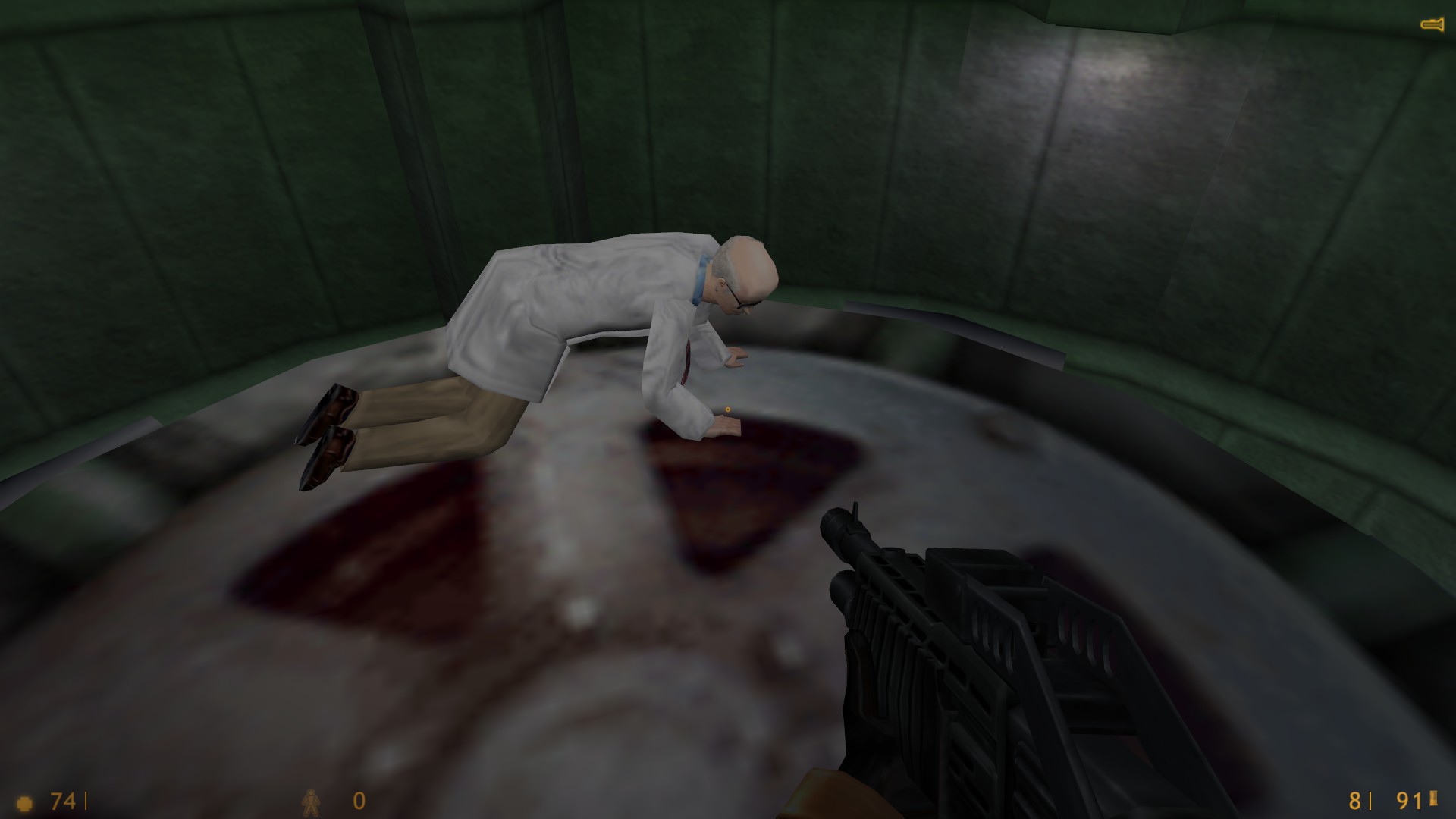
A satisfying conclusion.
Flip the switch, jump onto the sphere, and you’ll find a scientist who claims that this is his hiding spot. Cross to the metal beam on the other side, hit another switch, climb down, race around without the wild car thing hitting you, and climb back down. Apparently, hitting those buttons powered the thing on and killed the scientist.
Oops.
At least you have power now!
Make your way back to the elevator shaft, climb all the way up, jump down — which takes a bunch of health, by the way — and walk back to the puddle, which you will find is now an electrified death trap. Fortunately for you, some non-conductive crates can be maneuvered into the puddle, creating a makeshift bridge for you to cross.
Once again, you’ll find yourself in the room with the tentacle. Climb all the way to the top and back to the control room. The guard who told you that the tentacle didn’t like loud noises has gone. It’s just you now, left alone to face the tentacle. You and a big red button, the kind of button that screams “PRESS ME!”
So you do, the rocket ignites, and the tentacle gets burned to a crisp. Congratulations, you’ve just spent an entire level setting up a boss for his demise, and now he’s dead! It feels like an awesome victory. You face the creature three times before your final encounter. The entire level is dedicated to killing him. It’s a wonderful thrill.
Climb down the shaft the Tentacle came from and you’ll find its charred corpse. You’ll also find a revolver, which is a nice reward for a job well done. Make your way across and through some pipes, and eventually you’ll fall, crash into a table, squish the headcrab that was hiding under it, walk down a hall, and begin the next level, Power Up. It’s an odd conclusion to a wonderful level.
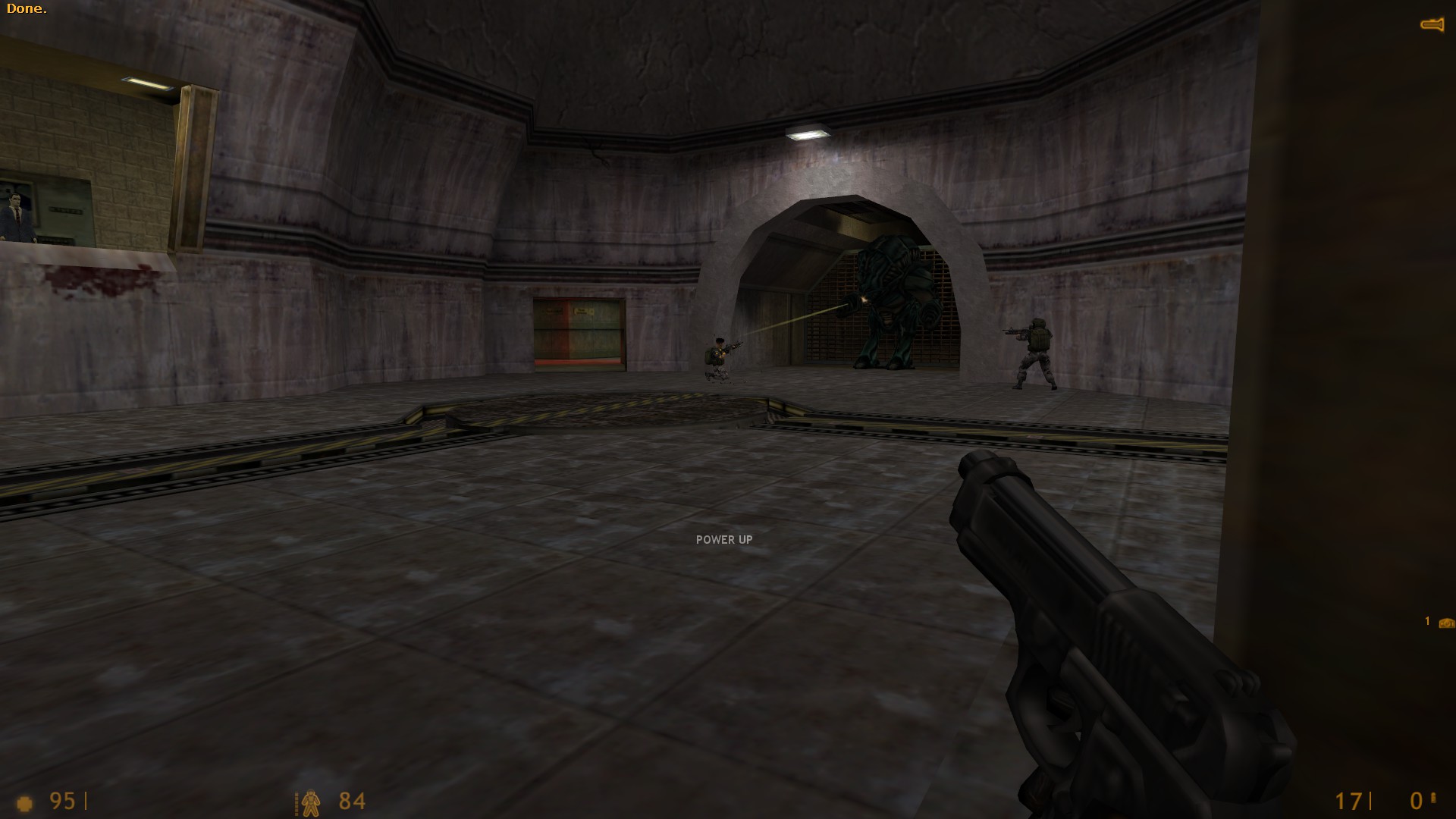
The problem with bosses in shooters.
Blast Pit’s Tentacle fight is a great alternative to the lengthy bullet sponges of modern shooters like Destiny. Facing a boss in any kind of game should be an event — something memorable and distinct. In many games, a boss requires players to use all the skills they have mastered in order to defeat it. Unlike a normal enemy, who might die in a small flurry of hits, a boss takes time and thought to beat.
Unfortunately, shooters face a unique problem when it comes to bosses.
Shooters are all about ranged play. Where bosses in melee games often require different combo moves to combat them, shooters keep players at a distance, generally limiting them to a small handful of attacks: primary fire, grenades, and, if you’re lucky, a secondary fire mode. Generally, these all behave the same way: stay away from the boss, attack from a distance, let it take damage, and you’re done.
Because bosses are supposed to be tougher than the average foe, they’re usually given a great deal of health, but because guns have to be at range, that’s more or less all they’re given, which turns most shooter bosses into mindless “dodge attack, strafe, hide in cover, click on enemy until he dies” fights. It’s not engaging, which means it gets boring fast.
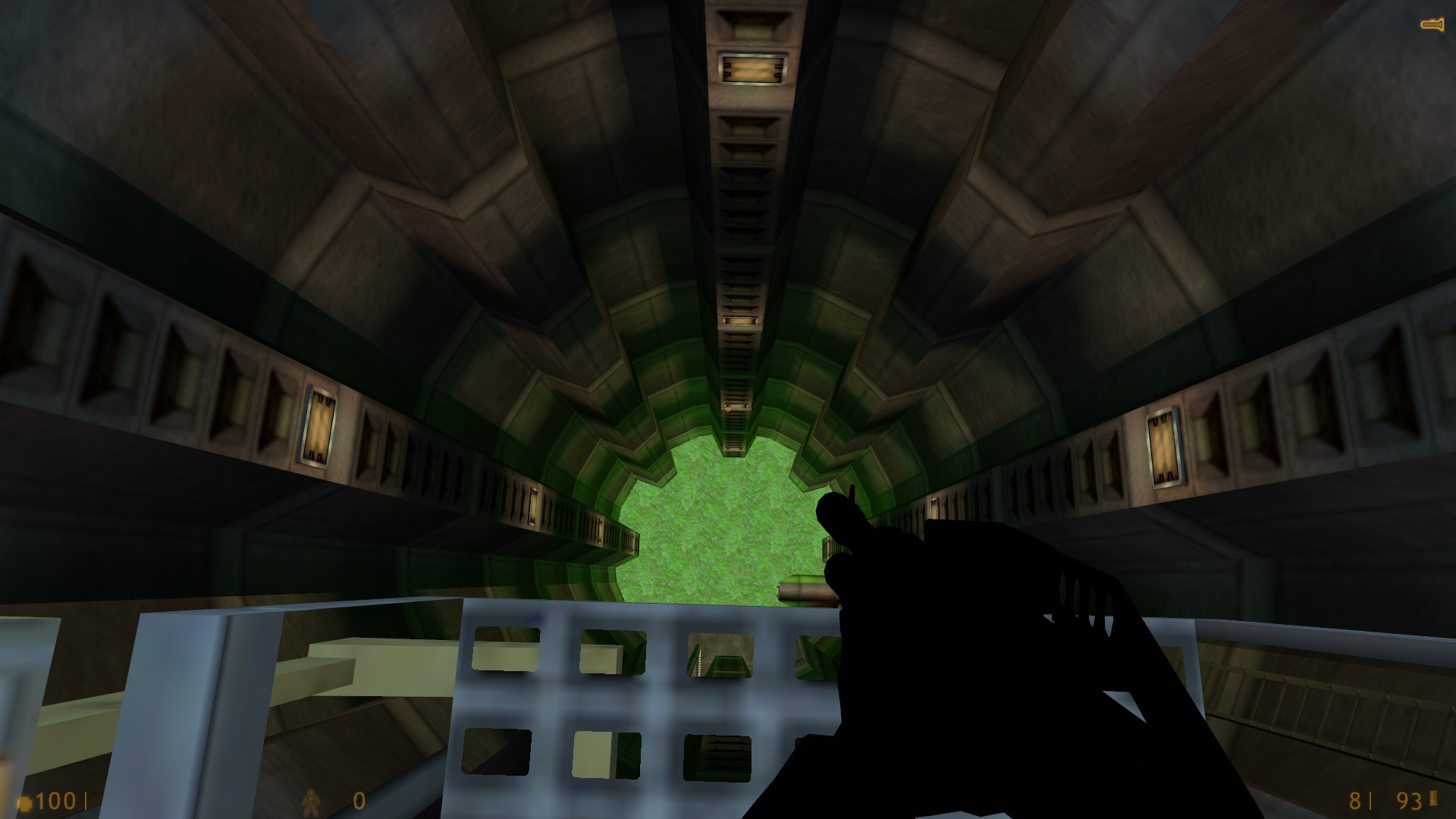
Some shooters have introduced bosses with weak points, which, at best, means that players need to consider where they position themselves in order to fight their foe, but even then, these enemies are still bullet sponges — consider Destiny‘s Devil Walker tanks, which must be shot in the legs to reveal their weak spots so the player can kill them.
With Blast Pit, Valve went for a shooter boss that couldn’t be shot. Sure, you could hurt him, but you couldn’t kill him without going through a series of interlocking puzzles to solve the problem. Instead of a knock-down, drag-out fight that took twenty minutes to complete, Blast Pit consisted of a bunch of little fights and puzzles that led to a simple, satisfying climax. The rivalry between you and the Tentacle had the length and scale of a boss fight, but it filled that time with varied gameplay spread throughout several rooms and interlaced with several other smaller fights.
That is the kind of boss fight I want to see games learn from.
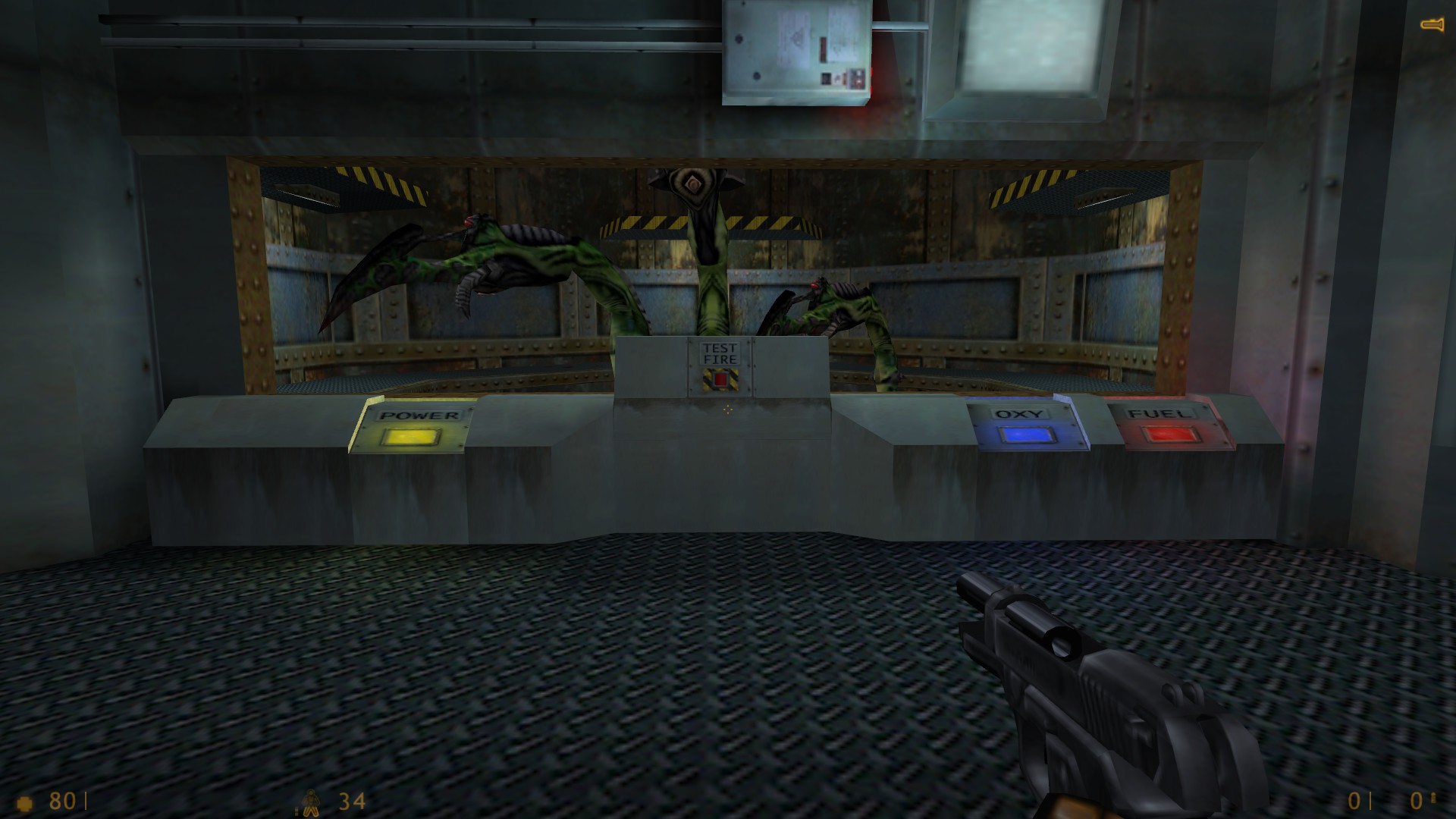
Blast Pit is all about progress. When players engage in a game, they expect to feel like they’re moving forward. Some developers use things like audiovisual feedback to bring a sense of progress. Other developers give players hundreds, even thousands of enemies to kill. Still others implement alerts that remind players they’re making progress. Valve’s approach here is much more subtle, Progress is felt by doing something new every couple of minutes. Players are driven onwards by a desire to see what’s next.
It’s somewhat strange that Bungie of all developers seemed to forget this in Destiny. That sense of constant progress is what made Halo such a great game, after all. Sitting still for ten minutes? That’s not the “thirty seconds of fun” design philosophy that skyrocketed Bungie to prominence and gave us a decade of great shooters.
I’ve played plenty of shooters this year, and they have all got their strong suits, but Half-Life reminds me that combat isn’t everything. It’s about pacing. It’s about retaining interest. It’s about how it feels. I like most of the shooters I’ve played this year, especially Destiny, but in returning to Half-Life, I’m reminded why I fell in love with shooters in the first place. It wasn’t so much about shooting, it was about engaging with a space, working towards a goal, and being awesome.
If you’ve never played Half-Life before, you should. It’s one of the all-time greats. While it hasn’t aged perfectly, it’s still a fun game, and one well worth experiencing. Play at least up through Blast Pit, but really, play it all the way through.
GB Burford is a freelance journalist and indie game developer who just can’t get enough of exploring why games work. You can reach him on Twitter at @ForgetAmnesia or on his blog. You can support him and even suggest games to write about over at his Patreon.
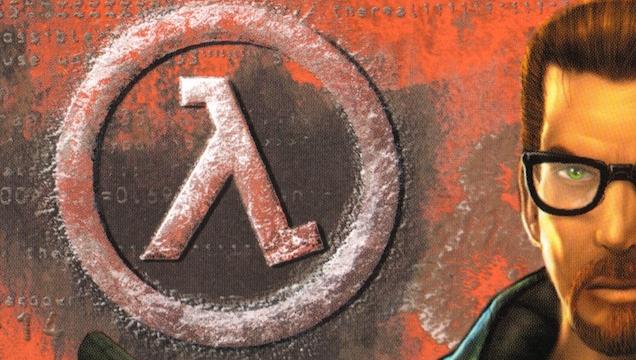
Comments
8 responses to “Modern Games Could Learn A Lot From The Best Level In Half-Life”
As much as I agree with the point being made here, the boss fight described would most likely fall apart when multiple people are fighting it (like Destiny) or when the boss is fought repeatedly for loot (like destiny).
I think comparing this boss fight with Destiny’s without accounting for the multiplayer/repeated encounters was a bad choice for comparision
Phased boss fights are the answer, and while this boss fight would not work for a game like destiny, making a boss from scratch like this for destiny would defiantly work. Just like other mmo’s they would need to test the hell out of them before release like wow’s ptr servers.
their are so many things even in a fps you could do with a boss. they just need to be creative and have the balls to release it… and test the living crap out of it like most good mmo’s do.
Agreed. It’s startling the difference in boss quality between the strike bosses and the raid bosses, however the raid bosses only really have 2 phases relic/everyone else and teleport team/non-teleport team (to me phases in a co-op boss fight are different jobs that need to be done simultaneously). They should have gone nuts with “phases” like in the train boss fight in Lost Planet 2
Good lord it took me far too long to figure out how to get past the tentaclaw monster thingo.
Pro Tip: Turn off high quality models so you play with the original content.
Something about Half Lifes level design I just loved (well up until Xen). If you stop and think about Black Mesa as an actual place it is nonsensical but in the game it just worked. Shadow Moses Island complex in MGS was the same. It is something I never felt with the HL sequels. I think the linear experience worked better confined to a single locale whereas the sprawl of a city made it feel more railroaded.
Totally agree, I was massively disappointed in HL2 for this precise reason. It lost the claustrophobic tension, and just became a race from locale to locale.
All this talk about how well Half Life does boss fights, and no mention of the gigantic blue bastard you fry just before “On a Rail”?
Tentacle-monster was cool, but introducing old blue mate to a billion volts until it disintegrates at least rates a mention!